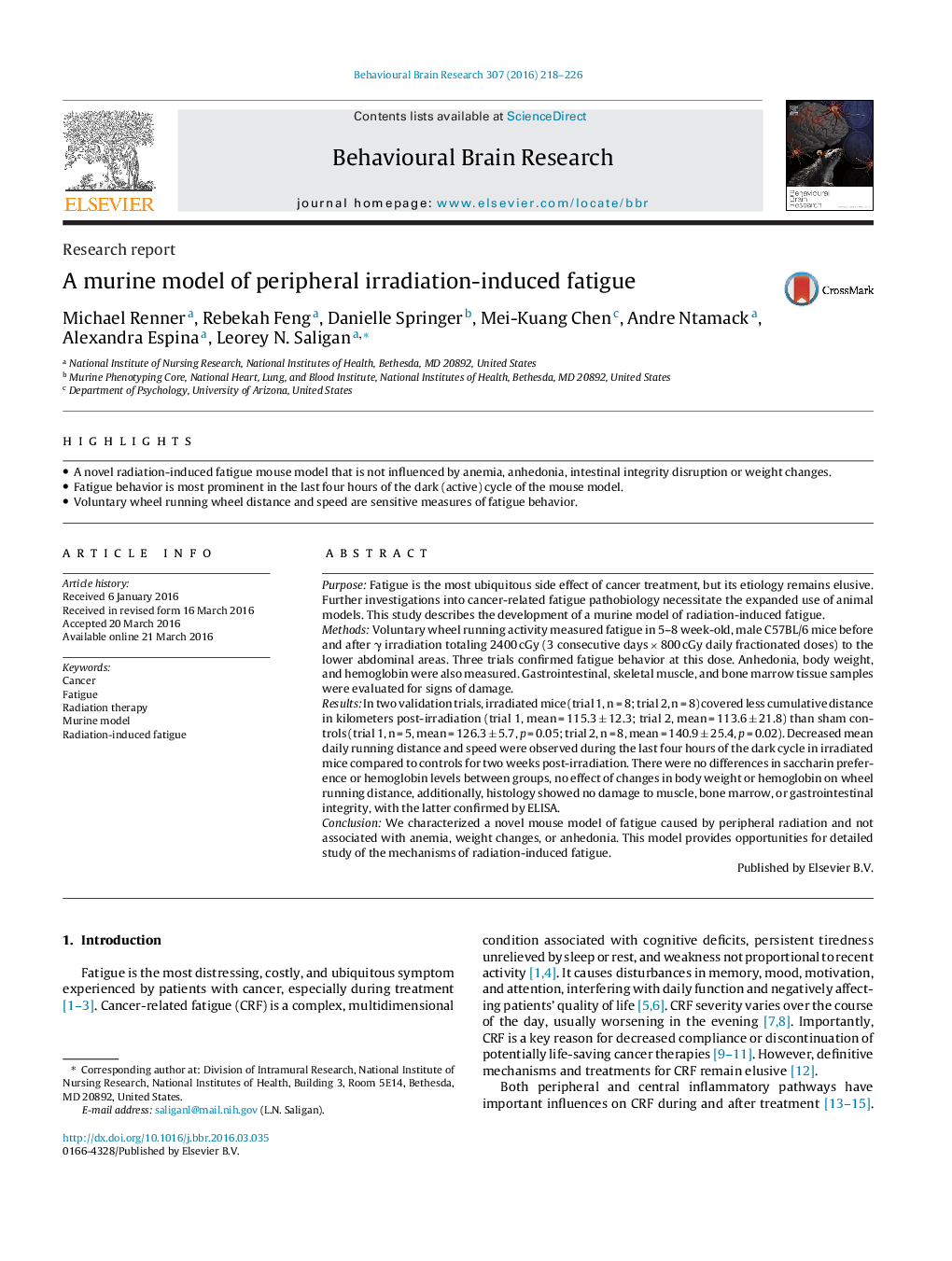| کد مقاله | کد نشریه | سال انتشار | مقاله انگلیسی | نسخه تمام متن |
|---|---|---|---|---|
| 4312270 | 1612926 | 2016 | 9 صفحه PDF | دانلود رایگان |
• A novel radiation-induced fatigue mouse model that is not influenced by anemia, anhedonia, intestinal integrity disruption or weight changes.
• Fatigue behavior is most prominent in the last four hours of the dark (active) cycle of the mouse model.
• Voluntary wheel running wheel distance and speed are sensitive measures of fatigue behavior.
PurposeFatigue is the most ubiquitous side effect of cancer treatment, but its etiology remains elusive. Further investigations into cancer-related fatigue pathobiology necessitate the expanded use of animal models. This study describes the development of a murine model of radiation-induced fatigue.MethodsVoluntary wheel running activity measured fatigue in 5–8 week-old, male C57BL/6 mice before and after γ irradiation totaling 2400 cGy (3 consecutive days × 800 cGy daily fractionated doses) to the lower abdominal areas. Three trials confirmed fatigue behavior at this dose. Anhedonia, body weight, and hemoglobin were also measured. Gastrointestinal, skeletal muscle, and bone marrow tissue samples were evaluated for signs of damage.ResultsIn two validation trials, irradiated mice (trial 1, n = 8; trial 2, n = 8) covered less cumulative distance in kilometers post-irradiation (trial 1, mean = 115.3 ± 12.3; trial 2, mean = 113.6 ± 21.8) than sham controls (trial 1, n = 5, mean = 126.3 ± 5.7, p = 0.05; trial 2, n = 8, mean = 140.9 ± 25.4, p = 0.02). Decreased mean daily running distance and speed were observed during the last four hours of the dark cycle in irradiated mice compared to controls for two weeks post-irradiation. There were no differences in saccharin preference or hemoglobin levels between groups, no effect of changes in body weight or hemoglobin on wheel running distance, additionally, histology showed no damage to muscle, bone marrow, or gastrointestinal integrity, with the latter confirmed by ELISA.ConclusionWe characterized a novel mouse model of fatigue caused by peripheral radiation and not associated with anemia, weight changes, or anhedonia. This model provides opportunities for detailed study of the mechanisms of radiation-induced fatigue.
Journal: Behavioural Brain Research - Volume 307, 1 July 2016, Pages 218–226
